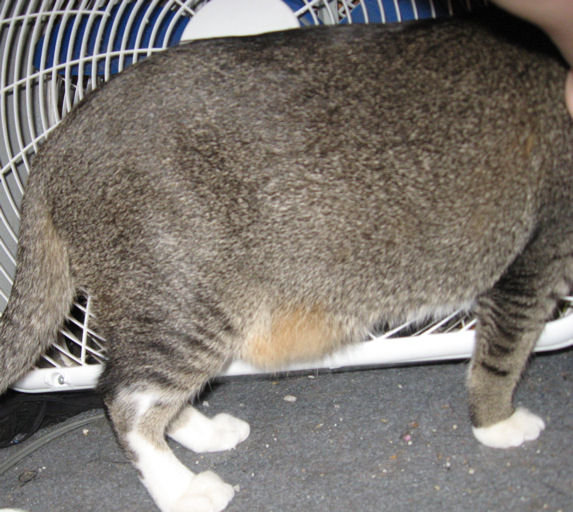

A white cat breeds as both a white (which you see) and a masked color (which you don't see) and can produce based on both white and the unseen color/pattern.Parti-color cats (blue-cream, tortie, calico) are almost always female, but males can and do occur occasionally (and are not always sterile).A bi-color must have a bi-color parent (see #21).A shaded parent can produce a smoke offspring, but a non-shaded (smoke) parent cannot produce a shaded offspring unless bred to a shaded (see #21).A shaded cat must have at least one parent that is a shaded (see #21).A cat with a white undercoat (smoke or shaded) must have a parent that has a white undercoat (see #21).A red tabby that is not a true tabby cannot produce a tabby offspring of any other color without being bred to a true tabby or a shaded. Whether or not a red can produce as a tabby will depend on whether it is a true tabby with a tabby or shaded parent or whether it is a red with ghost tabby markings and neither a tabby nor a shaded parent. All red cats will have some tabby markings.A silver tabby must have at least one silver tabby, shaded or smoke parent (see #13). A (non-silver) tabby must have at least one parent that is either a shaded or a tabby.The mating of a colorpointed cat and a cat with no colorpointed background will produce NO colorpointed offspring.To get a colorpointed kitten, both parents must be carrying the colorpointed gene (even if they do not appear colorpointed themselves).Two colorpointed parents cannot produce a non-colorpointed offspring.Two recessive color parents (cream, blue, etc.) cannot produce an offspring of a dominant color (black, red, etc.).A cat displaying a dominant color (black, red, tortie, etc.) must have a parent which displays a dominant color (see #21).The characteristic cannot be transmitted from one generation to the next without showing that characteristic in each generation. A dominant characteristic (all dominant colors and patterns such as shaded, smoke, white, tabby, bi-color, etc.) cannot skip generations.A kitten's pattern can be inherited from either parent.One notable exception is the colorpoint gene, which can carry through a number of generations (see #21 & #24) but Maine Coons are NEVER colorpoint. The color/patterns found in the pedigree of a kitten will NOT always directly affect the color/pattern of the kitten. Only the immediate parents determine the color/pattern of a kitten.
Dilute ticked tabby plus#
Dilute ticked tabby manual#
This information is not meant to be a complete manual on cat genetics.

The following statements are generally true but there are exceptions.


 0 kommentar(er)
0 kommentar(er)
